An effective receptionist resume will help you stand out from the crowd when applying for a position. As a receptionist, you allow visitors to find the right person or place, answer phones, and schedule appointments. The key is identifying your relevant job experience while highlighting your strong points. Resume tips for receptionists will show you how to present your qualifications to potential employers effectively. A well-written resume makes a difference in getting an interview and getting hired. An organized and concise document that highlights your skills, education, and experience will go a long way in helping you land the job you want.
Dental Receptionist Resume Example
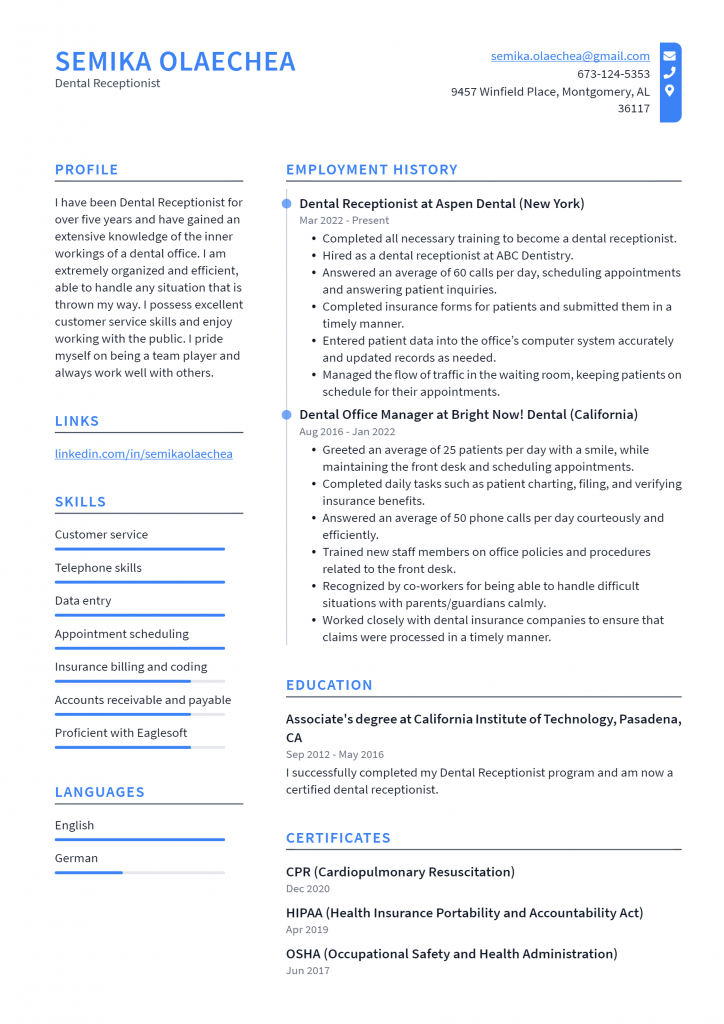
Download This Dental Receptionist Resume as PDF
Dental Office Manager Resume Example
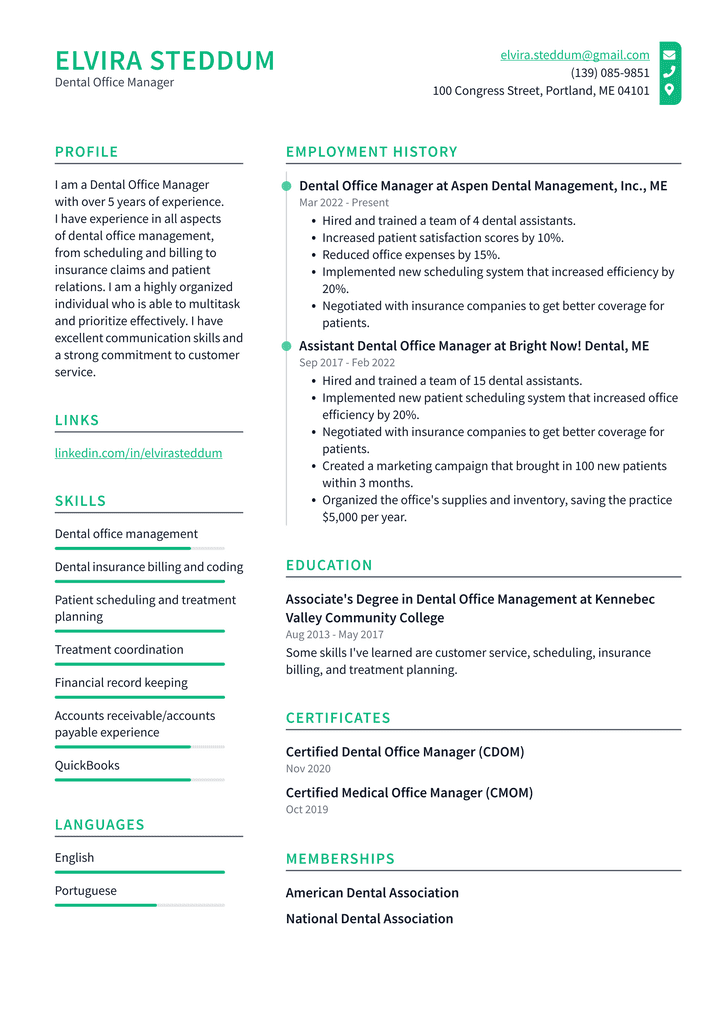
Download This Dental Office Manager Resume as PDF
Dental Treatment Coordinator Resume Example
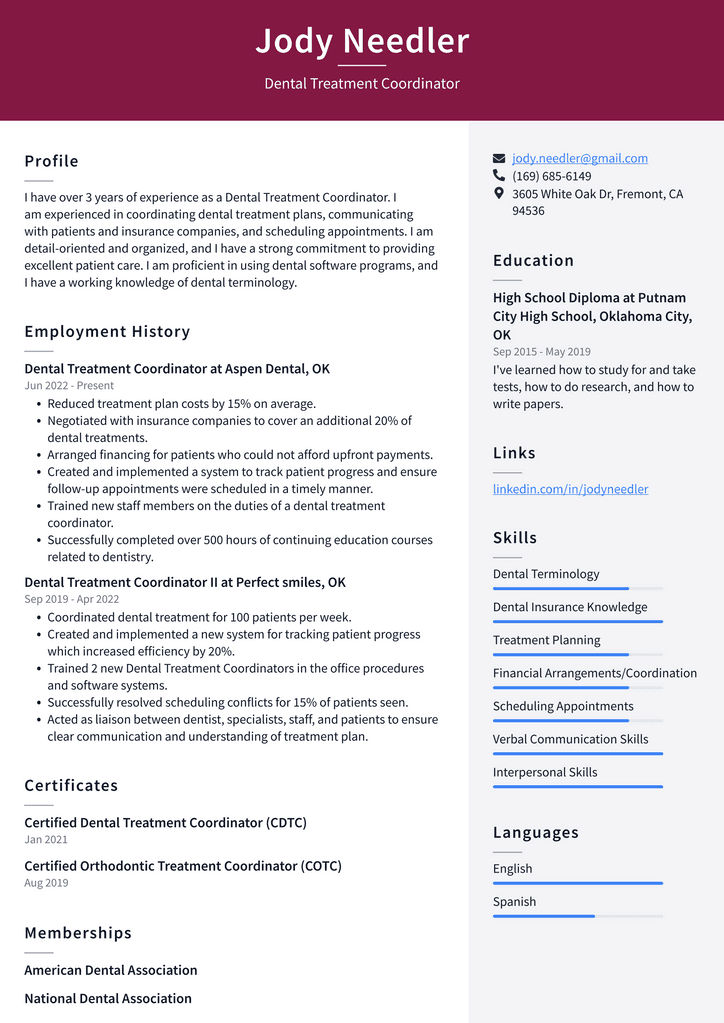
Download This Dental Treatment Coordinator Resume as PDF
Dental Insurance Coordinator Resume Example

Download This Dental Insurance Coordinator Resume as PDF
Patient Accounts Representative Resume Example
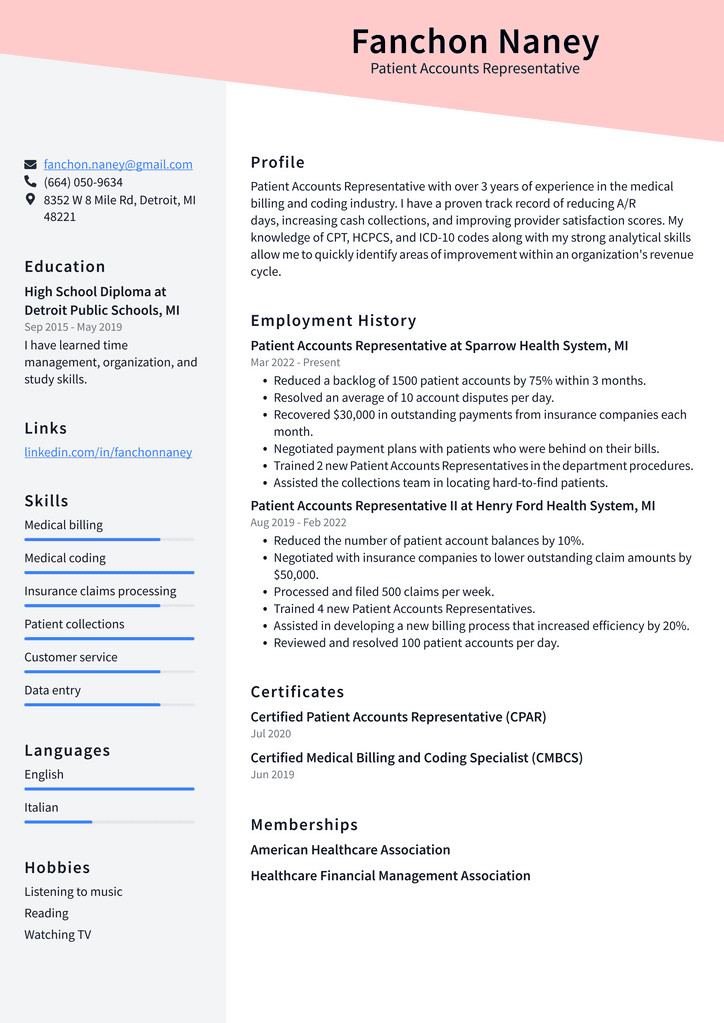
Download This Patient Accounts Representative Resume as PDF
Dental Billing Specialist Resume Example
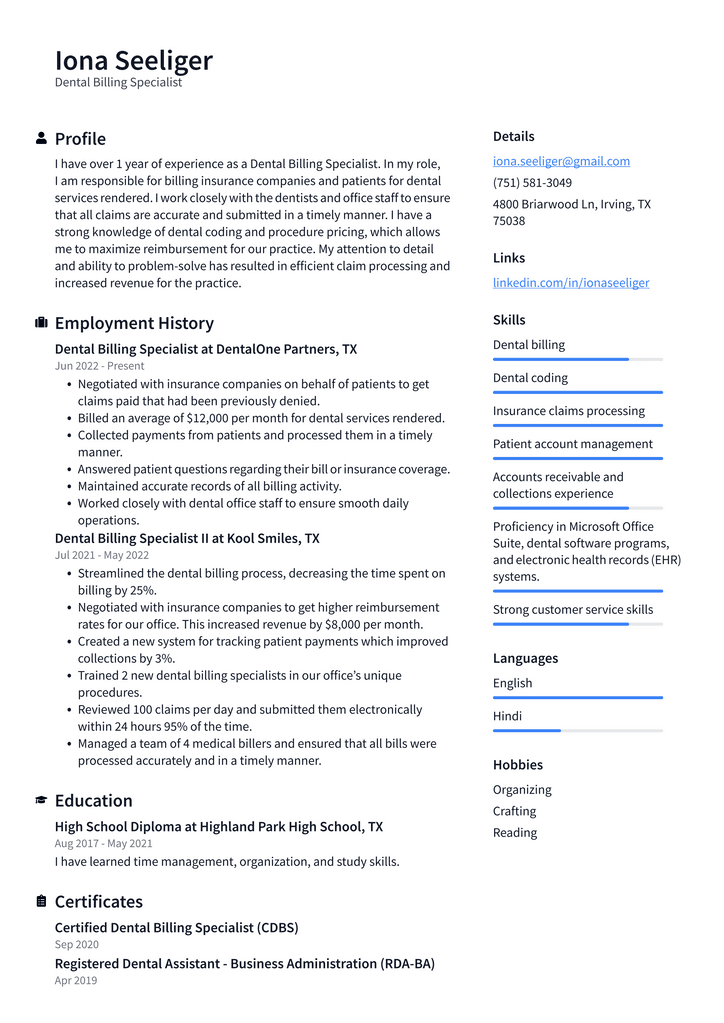
Download This Dental Billing Specialist Resume as PDF
Accounts Receivable Specialist Resume Example
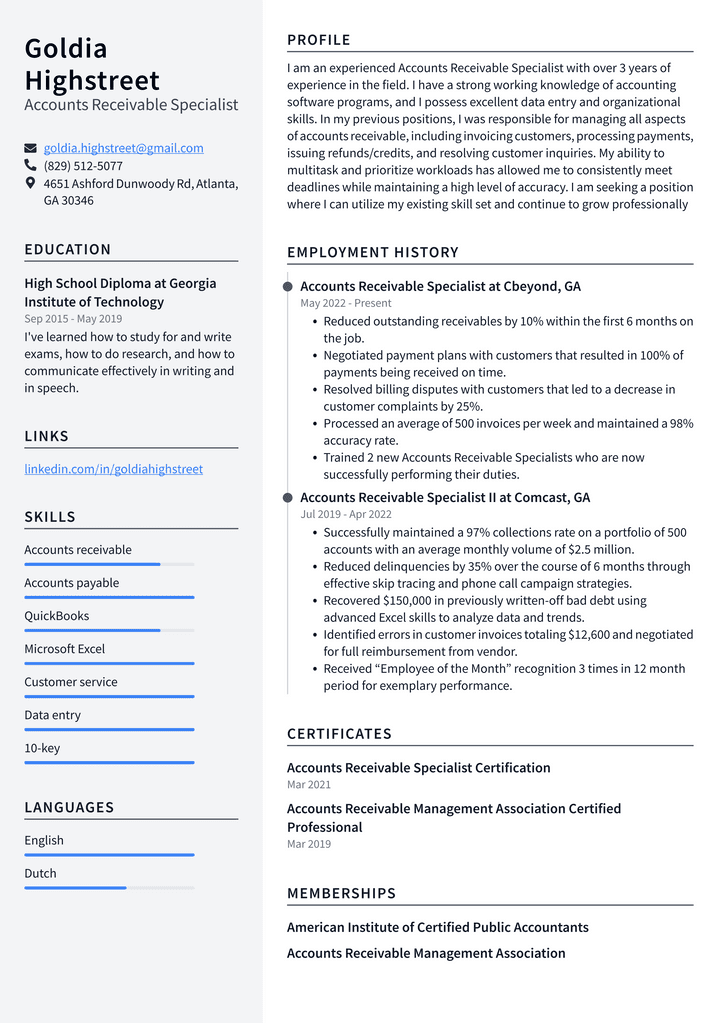
Download This Accounts Receivable Specialist Resume as PDF
Create a Resume That Highlights Your Skills
The first thing you want to do is make sure that your resume highlights your skills and qualifications. You can do this in a few ways. First, you want to ensure that your resume is written in the third person. This is because it will distance you from the outline and make it sound more objective. This is especially important if you have a lot of transferable skills. Second, you want to ensure that you include keywords relevant to the position. This will help the hiring manager quickly identify your qualifications. Third, have a “Skills” section at the top of your resume. This will allow you to quickly and easily identify your skills and how they relate to the position you are applying for.
List your most relevant job experience first
The first section of your resume should list your most relevant job experience. This should be the information that shows the hiring manager that you are the best candidate for the position. When deciding what to include, focus on the job experiences that relate most closely to the post you are applying for. If your job experiences are very different, you may need to create other resumes for each position. Next, you should list each job experience chronologically by date and company. Include the job title, the company’s name, the city and state where the company is located, and the dates you worked there. Finally, use bullets or numbers to list your job duties.
Mention any skills you’ve gained from past jobs
In addition to listing your most relevant job experience, you may also want to include skills you’ve gained from past jobs. This can be helpful to show that you have the skills needed to do the job. When deciding which skills to include, choose skills relevant to the position you are applying for. This can help you get your foot in the door for an interview. If you have a lot of skills, you may want to consider putting them into different categories. This can help you organize your list of skills and make it easier to read. It can also help you decide which skills to include in your resume.
Mention any certifications you have obtained
If you have obtained any certifications, they should be included in your resume. These can consist of certificates held by other professionals in your industry. This can show hiring managers that you have the necessary expertise to do the job. If you have credentials that are not directly related to the job you’re applying for, you may want to include them in your “Additional Information” section. This way, they will be seen, but they won’t take the focus away from your qualifications. If you have a certification directly related to the job you are applying for, you can mention it in the “Skills” section. This will allow you to quickly identify the certification and how it relates to the job.
Sum up with a short paragraph about why you’re the right fit
At the end of your resume, you may want to include a short paragraph about why you’re the right fit for the job. This can help you stand out from the crowd. However, this is optional and depends on the type of job you’re applying for. For example, if you’re applying for a management position, you may want to include a short paragraph about how your work experience has prepared you for the job. Alternatively, if you’re applying for a position with a specific company, you can discuss why you specifically want to work for that company. You can also include a short paragraph that identifies your long-term goals. This can show hiring managers that you are interested in furthering your career and achieving more with your life. Again, this can help you stand out from the crowd and offer hiring managers that you want the position. You can also use this paragraph to address any hiring managers’ concerns regarding your lack of experience in the industry or in the job you’re applying for.
Conclusion
The dental receptionist resume example outlined above can help you land an interview for your dream job. By following these tips, you can ensure that your resume is written the best way possible. A practical overview will help hiring managers identify your qualifications and highlight why you’re the best candidate for the job. Now that you have written the perfect resume, you also need to send it to the right people. You can do this through our dental job board and dental job portal. We have thousands of dental job listings from employers looking to hire dental professionals.